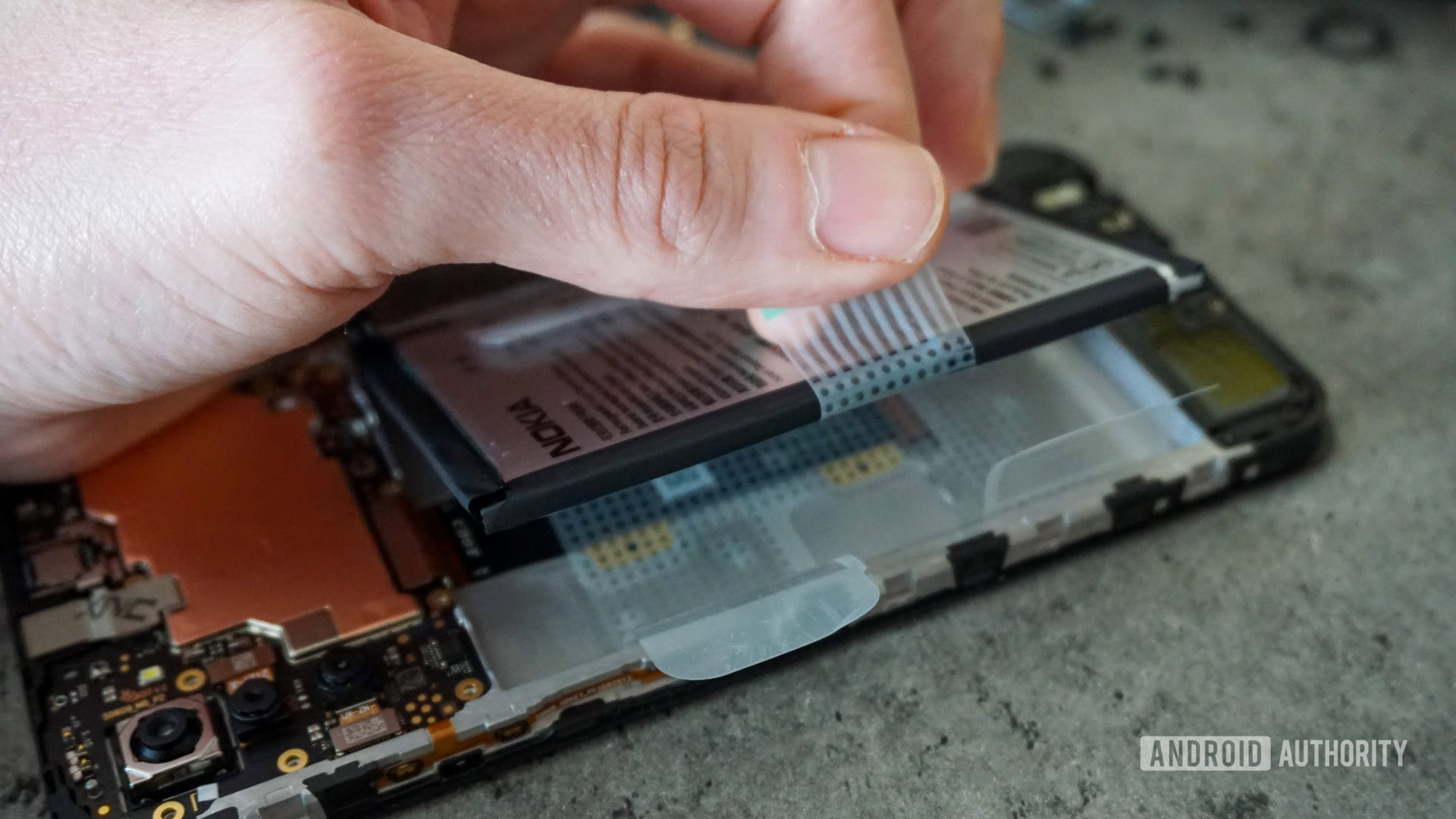Affiliate links on Android Authority may earn us a commission. Learn more.
It's official: Smartphones will need to have replaceable batteries by 2027

- The European Council has ended its adoption procedure for rules related to phones with replaceable batteries.
- By 2027, all phones released in the EU must have a battery the user can easily replace with no tools or expertise.
- The regulation intends to introduce a circular economy for batteries.
In the middle of June, we shared a news report about the future of replaceable batteries in smartphones. That report focused on the European Parliament voting to enact a law forcing manufacturers of all battery-powered devices — including smartphones — to offer easily replaceable batteries.
This week, the European Council officially agreed to the new regulation. Now, the only step left is for the European Council and Parliament to sign on the dotted line. Once they do, the clock starts ticking: any manufacturer wanting to sell phones in the EU must ensure those phones have replaceable batteries by 2027.
Phones with replaceable batteries: What does this law mean?
The European Council only has jurisdiction over Europe, obviously. So this law will not, technically, have an effect in any other area of the world.
However, that doesn’t really mean much in the grand scheme of things. Companies like Samsung, Google, Apple, etc., don’t design devices specific to Europe. Apple, for example, is not going to create a European iPhone with a replaceable battery and one for the United States without. In other words, this law will change all iPhones. It will also change all tablets, laptops, EVs, e-bikes, and anything else with a rechargeable battery.
The grace period from now until 2027 is to give OEMs enough time to redesign their products. This new law states, specifically, that users should be able to replace a battery in their phone without any special expertise or tools. Being that almost all smartphones today are designed like a “glass sandwich” that relies on extensive use of adhesives, the very fundamentals of how companies design phones will need to change.
It’s too early to say yet how this law will change iPhones, Galaxy S phones, Pixels, etc. However, they will change in response to this law, which is huge news.
What is the intention of this law?
This law exists to force manufacturers to create a circular economy for batteries. A “circular economy” refers to a manufacturing model in which the resources put into it are recycled or reused as much as possible. In a perfect world, the resources needed to create a smartphone would be sourced 100% from older smartphones, so nothing new would ever need to be used. Obviously, the 100% figure would be practically impossible, but getting much closer to 100% is a very realistic goal.
Here are some other rules this new law covers related to phones with replaceable batteries:
- Collection of waste: OEMs will need to collect 63% of portable batteries that would normally go to a landfill by the end of 2027. By the end of 2030, that number should be at 73%.
- Recovery of waste: Lithium recovery from waste batteries will need to be at 50% by 2027. By the end of 2031, it should be at 80%, meaning 80% of the lithium inside a battery can be recovered and repurposed for new batteries.
- Recycling minimums: Industrial, SLI, and EV batteries will need to be made up of certain percentages of recycled content. Initially, this will be 16% for cobalt, 85% for lead, 6% for lithium, and 6% for nickel.
- Early recycling efficiency target: Nickel-cadmium batteries should have a recycling efficiency target of 80% by the end of 2025. All other batteries should be at a 50% efficiency target by 2025.
What happens now?
We likely won’t see anything change this year. However, over the next few years, you’ll likely begin to see smartphones with slightly different designs as manufacturers move toward compliance with this new law. It will take years before manufacturers will have the designs, supply chains, and equipment needed to create phones with replaceable batteries at scale.
Remember that consumers expect certain things from smartphones nowadays, which will mean that OEMs can’t just go back to the old way of doing things. An IP68 rating would be very difficult to obtain while still offering a premium-feeling device with an easily replaceable battery, for example. These are hurdles OEMs will need to get over to be in compliance.
Regardless, things are going to be very different in just a few years!